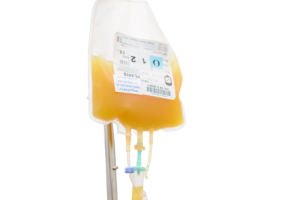Thrombocytopenia
/*! elementor – v3.12.1 – 02-04-2023 */
.elementor-heading-title{padding:0;margin:0;line-height:1}.elementor-widget-heading .elementor-heading-title[class*=elementor-size-]>a{color:inherit;font-size:inherit;line-height:inherit}.elementor-widget-heading .elementor-heading-title.elementor-size-small{font-size:15px}.elementor-widget-heading .elementor-heading-title.elementor-size-medium{font-size:19px}.elementor-widget-heading .elementor-heading-title.elementor-size-large{font-size:29px}.elementor-widget-heading .elementor-heading-title.elementor-size-xl{font-size:39px}.elementor-widget-heading .elementor-heading-title.elementor-size-xxl{font-size:59px}
Thrombocytopenia
Patho
- Platelets form a plug to stop bleeding when injury occurs.
- ⇓ Platelets that may lead to bleeding
- < 150,000 / μL
- Normal 150,000 – 450,000/ μL

Signs and Symptoms
- Petechiae
- Purpura
- Ecchymosis
- Bleeding gums
- Nose bleeds
- Blood in stool or urine
- < 20,00 bleeding from mucous membranes, urine, rectal, oral nasal, and intracranial bleeding.
- 15 to 30,000 results in spontaneous bleeding
- 30 to 50,000 susceptible to minor bruising
- Know this!!!!!
Causes
- P Platelets Disorder
- L Leukemia
- A Anemia
- T Trauma
- E Enlarged spleen
- L Liver Disease
- E Ethanol (alcohol)
- T Toxins (drugs)
- S Sepsis
Diagnosis
- ⇓ Platelets that may lead to bleeding
- < 150,000 / μL
- Normal 150,000 – 450,000/ μL
- ⇑ bleeding time
- Anemia due to bleeding
- ⇑ Coagulation studies (PT/INR/PTT
- Bone marrow biopsy
Treatment
- Transfusion
- Bone marrow transplant
- Removal of spleen (splenectomy)
Bleeding Precautions
- Electric razor
- No meds such as aspirin
- Protect from injury
- Soft-bristle tooth brush
- Minimize invasive procedures if possible (needle sticks, spinal taps, etc)
